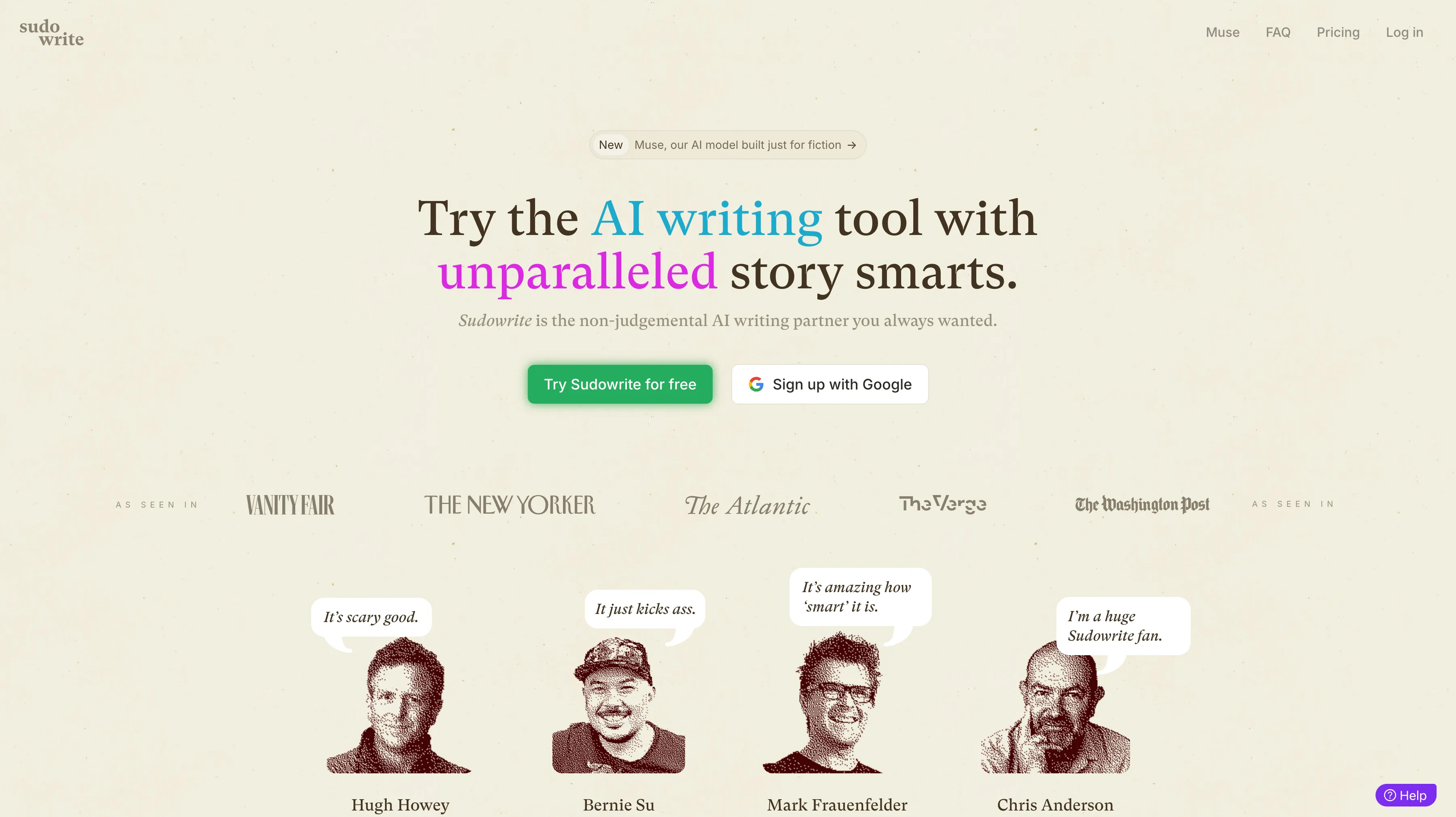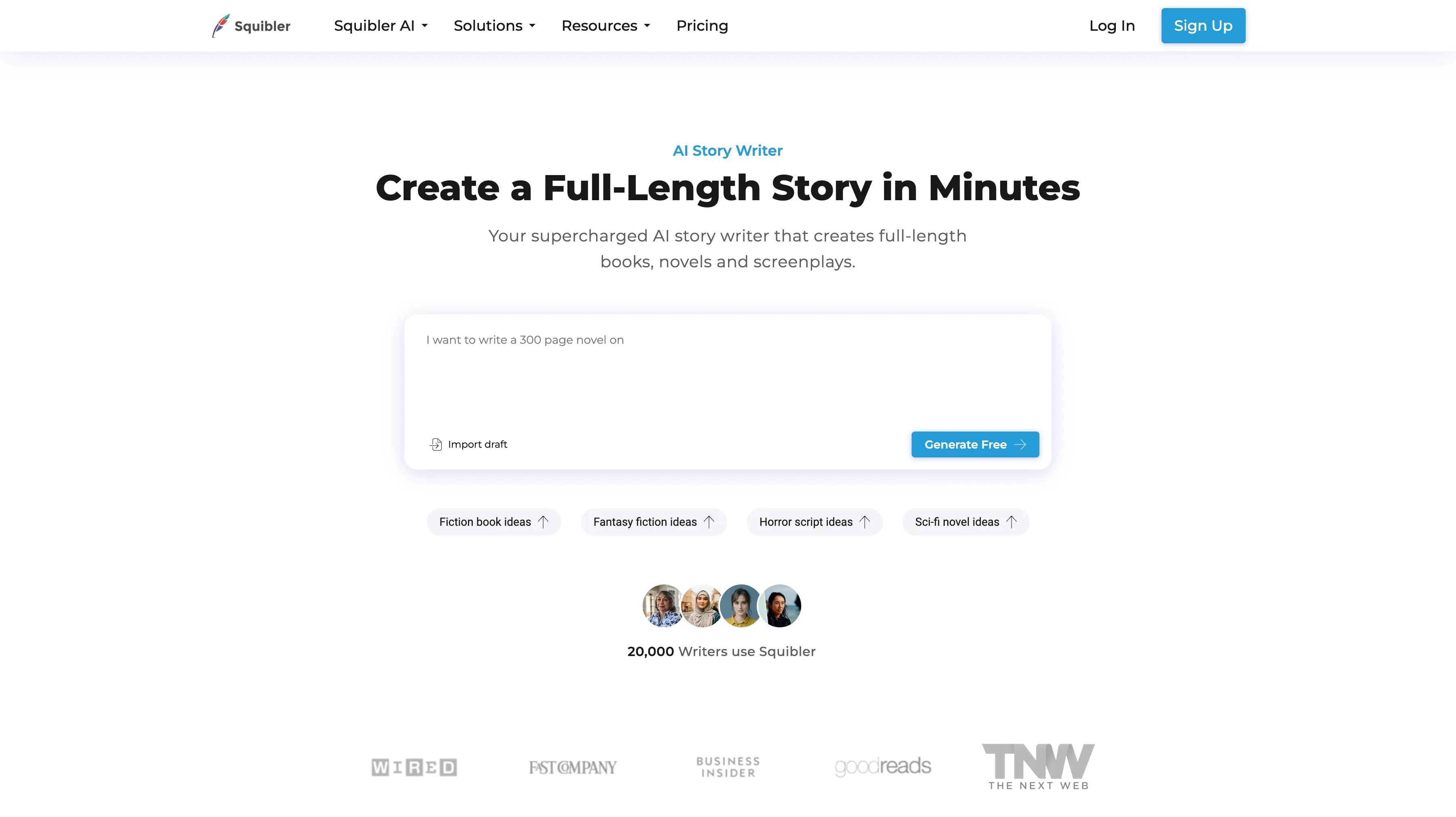The Best AI Tools for Creative Writing in 2025
Published on 5/25/2025 by Signal

Staring at a blank page is a time-honored tradition. In 2025, it’s also an unnecessary one. Let’s talk about your new co-pilot. The conversation around Artificial Intelligence in creative writing has officially shifted from "if" to "how."
A 2024 survey revealed that over 30% of authors now use AI in their writing process. It’s no longer a niche curiosity; it's a professional toolkit. But let's be clear: this isn't about replacing the author. It's about augmenting your creativity.
This guide will walk you through the best AI tools on the market, helping you select the right partner for your workflow, from brainstorming that first spark to polishing the final draft.
The All-in-One Creative Suites
These platforms are your AI-powered writing studios, designed from the ground up for fiction. They're less like a chatbot and more like a junior associate who never sleeps.
Sudowrite

Sudowrite has become the darling of the literary AI world, and for good reason. It’s built by writers, for writers, and it shows. Its standout feature is its ability to generate prose that often feels surprisingly... human.
The core "Write" button can expand on your prose or take it in new directions. "Describe" adds sensory details, turning a simple mention of a "cup of coffee" into a multi-sensory experience. Its "Story Bible" feature is indispensable for tracking characters and world-building details, ensuring you don't accidentally change a character's eye color halfway through your novel.
Best For: Novelists and short story writers seeking a collaborative partner. Sudowrite excels at breaking through writer's block with style.
Pricing: Subscription-based, with tiers based on how many AI-generated words you need.
NovelAI

If you write science fiction, fantasy, or any genre that requires extensive world-building, NovelAI deserves your attention. It’s a highly customizable engine for crafting unique narrative voices and intricate settings. NovelAI allows you to train its models on specific authors or styles, giving your output a distinct flavor. Its Lorebook functionality acts as a dynamic world anvil, letting the AI actively pull from your established canon to maintain consistency.
Best For: Genre fiction authors who want deep customization and control over the AI's tone and knowledge base.
Pricing: Subscription-based.
Squibler

Squibler takes a more structured, project-management approach. Its bold promise is to help you generate a full book from a single concept, and it provides a robust framework to make that happen. The platform shines in its initial outlining phase, generating detailed chapter-by-chapter plot points. Its "Smart Writer" helps you flesh out each section, keeping the narrative on track.
Best For: Writers who thrive on structure and want an AI that manages the entire book-writing process from start to finish.
Pricing: Subscription-based, focused on project completion.
Tools for Every Task
You don't always need a full suite (or want one). Sometimes, you just need a specialized tool for a specific job.
Brainstorming and Plotting
Feeling uninspired? Let an AI be your muse. Tools like Plot Generator and StoryLab.ai are designed to churn out a high volume of loglines, character archetypes, and plot twists. The goal here isn't to find a perfect story, but to sift through dozens of ideas to find a single, compelling nugget of inspiration.
Prose Enhancement and Style Editing
You already know them, but they’ve evolved. ProWritingAid and Grammarly have moved far beyond simple comma-checking.
Their AI-powered suggestions now analyze sentence structure, pacing, and tone. Worried this will make your writing robotic? Don't be. The final decision is always yours; think of it as a tireless copyeditor highlighting opportunities for improvement.
There's Always The Vanilla Tools
And, of course, there are the titans: ChatGPT, Claude, and Gemini. Their strength is their sheer versatility. You can use them to brainstorm character backstories, generate dialogue in a specific style, or even summarize complex research.
The catch? You need to be a skilled prompt engineer—a fancy term for knowing how to ask the right questions. Your output is a direct reflection of your input.
A Practical Guide to Getting Started
Using these tools effectively is an art form in itself. Here’s how to make it work.
Find Your Balance: Decide where AI fits in your process. Are you using it as an intern for research and brainstorming, or as a co-writer to generate prose? There is no wrong answer, but establishing boundaries is key.
Master the Prompt: Be specific. Instead of "Write about a sad detective," try: "Generate a 200-word introduction for a hardboiled detective in 1940s San Francisco. He's just lost a client and is drinking cheap whiskey in a dimly lit office as the fog rolls in. Use short, punchy sentences."
Maintain Your Voice: This is the big one. AI can generate text, but it doesn't have your unique perspective or emotional insight. Use its output as raw material. Rewrite it, infuse it with your style, and make it your own. The goal is augmentation, not abdication.
The Future is a Blank Page
Looking ahead, we can expect AI models trained on a writer’s own body of work, creating a truly personalized assistant. The line between tool and collaborator will continue to blur.
Ultimately, these tools are here to serve your story. They are powerful, efficient, and packed with potential. Now, it's time to choose your co-pilot and get to work. Ready to supercharge your writing process? Pick one tool from this list and try its free trial this week. Your blank page is waiting.
See something that doesn't look right? Have any suggestions?
Let us know!